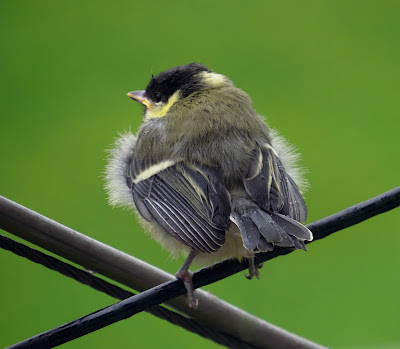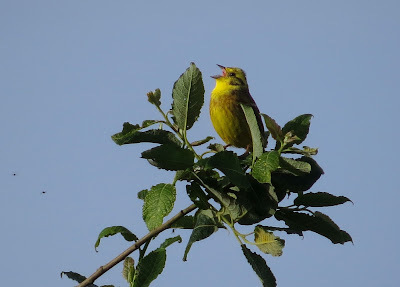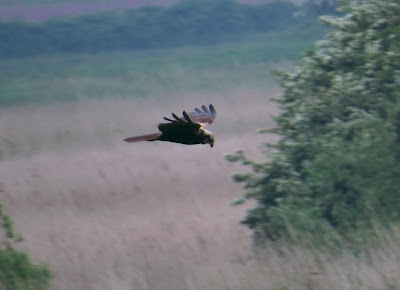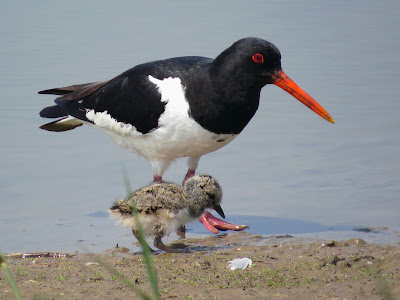Hello
Jacob Spinks located a Raven family between Scaldwell village and Pitsford Reservoir this afternoon, and at risk of sounding repetitive, Blueberry Farm hosted two Barn Owls and two singing Grasshopper Warblers on a beautiful evening after a very wet start to the day.
Yesterday (Sunday) John Woollett and his team tried hard to catch and ring birds at Stortons Gravel Pits with over 800 feet of mist nets providing 54 captures which included 33 new birds. Like Pitsford, a real lack of young birds and little in the way of tit flocks. A juvenile Kingfisher was probably the most exotic capture and other birds included four Bullfinches, two Song Thrushes, a Reed Bunting, an impressive four Cetti's Warblers, two Blackcaps, a Garden Warbler, two Whitethroats, five Sedge Warblers and fourteen Reed Warblers. Some of the Reed and Sedge Warblers were birds ringed on-site from previous years.
Regards
Neil M
Jacob Spinks located a Raven family between Scaldwell village and Pitsford Reservoir this afternoon, and at risk of sounding repetitive, Blueberry Farm hosted two Barn Owls and two singing Grasshopper Warblers on a beautiful evening after a very wet start to the day.
Yesterday (Sunday) John Woollett and his team tried hard to catch and ring birds at Stortons Gravel Pits with over 800 feet of mist nets providing 54 captures which included 33 new birds. Like Pitsford, a real lack of young birds and little in the way of tit flocks. A juvenile Kingfisher was probably the most exotic capture and other birds included four Bullfinches, two Song Thrushes, a Reed Bunting, an impressive four Cetti's Warblers, two Blackcaps, a Garden Warbler, two Whitethroats, five Sedge Warblers and fourteen Reed Warblers. Some of the Reed and Sedge Warblers were birds ringed on-site from previous years.
Regards
Neil M
 |
| Woodpigeon |
 |
| Male Bullfinch. Above two images courtesy of Jacob Spinks. |
 |
| Eyed Hawk-moth |
 |
| Barred Yellow moth |
 |
| Longhorn Beetle Agapanthia villosoviridescens Above images courtesy of John Gamble. |
 |
| Great Knot contained within a Knot flock at Titchwell, Norfolk. The Great Knot is the larger, darker bird (at the front of the upper two images). Courtesy of Cathy Ryden. |
 |
| Crab-eating Herring Gull. Courtesy of Cathy Ryden. |


































